Don’t Overlook a Dazzling Damselfly
Updated: Sep. 29, 2023
Get to know these fast-flying, jewel-colored wonders! Plus, find out what makes a damselfly different from a dragonfly.
Damselfly vs Dragonfly
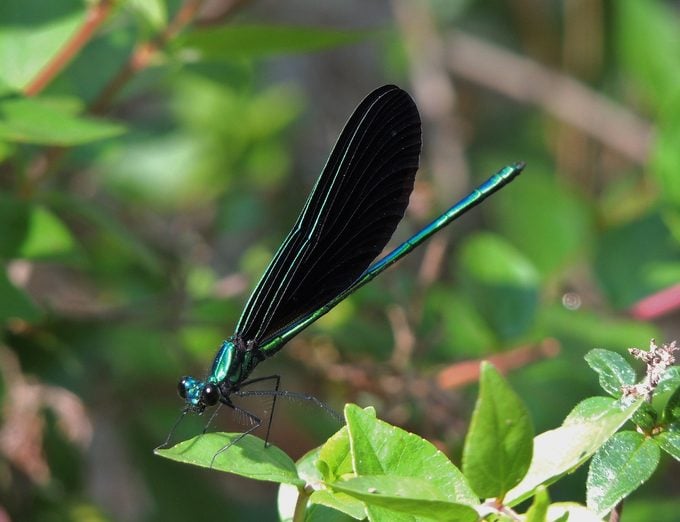
Blink and you might miss ’em! Less than 3 inches long with thin, delicate bodies, damselflies glide through gardens in search of small flying insects.
Damselflies and dragonflies both come from the same Odonata order (referred to collectively as odonates), but damselflies have noticeably thinner bodies. They typically hold their wings straight back and above their bodies, while dragonflies hold their wings open and out to the sides.
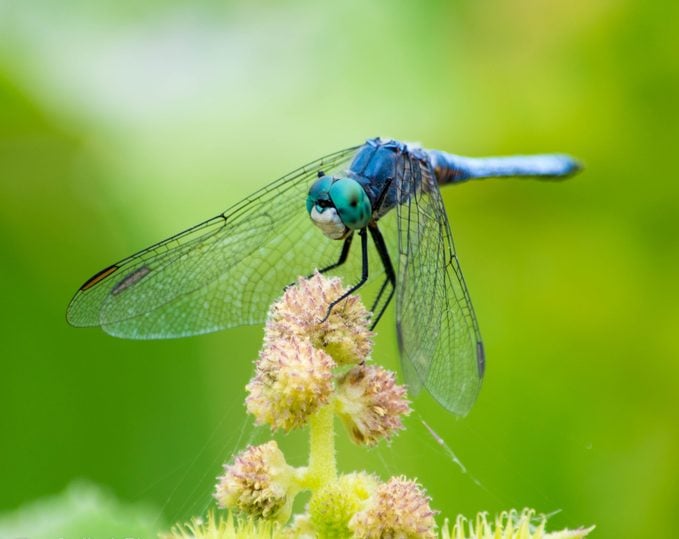
Dragonflies have large eyes on the top of their heads; damselfly eyes are wide-set and located on the sides of their head. Damselflies and dragonflies choose from the same general menu, but damselflies focus on the smallest items, eating tiny insects like gnats, mosquitoes and midges.
Damselfly Characteristics
- Thin body
- Wings usually held straight back and above body
- Wide-set eyes on top of head
Dragonfly Characteristics
- Thick body
- Open wings, spread out from the sides of the body
- Large eyes nearly touch on top of head
Learn more fascinating facts about dragonflies.
Damselfly Colors
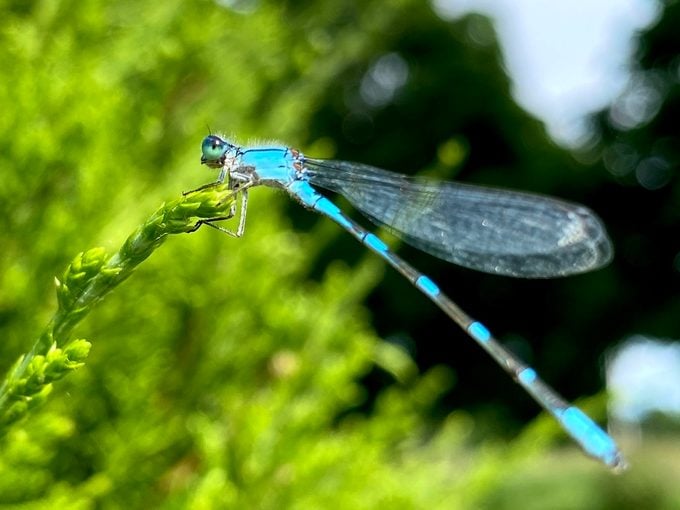
The diversity of colors damselflies display is impressive. Blues and greens are most common, but some species are red, orange or yellow. Coloration often differs between males and females. For example, male bluet damselflies are blue, while females may be blue, green or brown.
We found gorgeous dragonfly pictures you’ll love.
Damselfly Diet and Habitat
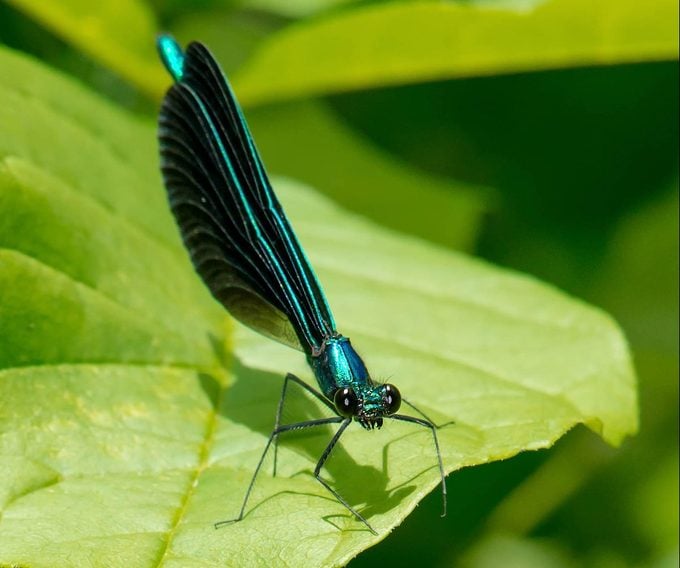
A backyard water feature, especially a shallow pond, helps attract damselflies to your landscape, because it lures the types of insects they eat. Otherwise, find these odonates near wetlands and other fresh water.
Look for perched damselflies soaking up the morning sun, holding their wings close to their bodies. After they’re warmed up, they take to the air in search of a meal of fresh insects.
Mating damselflies connect in wheel- or heart-shaped postures. They lay their eggs in shallow water; once hatched, the aquatic nymphs feed on small bugs.
In its larval stage, a damselfly molts many times under water before moving on to land, where it transforms into a winged adult. More than 5,000 species of odonates are spread across six continents; Antarctica is too cold for them.
In the eastern United States, a widespread and easily recognizable species is the brilliant jade-bodied ebony jewelwing damselfly. The females lack the luster of the males but sport a white spot on each of their solid black wings.
Dancers, another common damselfly group, sometimes are found near slow-moving streams. Keep an eye out for blue-fronted dancers in the East and vivid dancers in the West.
Discover key differences between bees and wasps.
How to Spot Damselflies
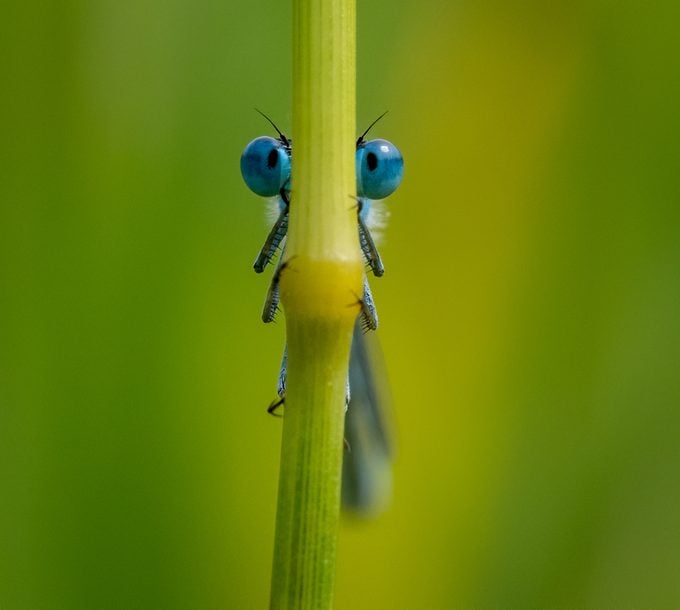
The best way to examine odonates is to watch them through binoculars when they are perched. If you don’t have a pair handy, you can still see them easily if you find a place where they’re active and simply wait. (Damselflies don’t sting or bite.) You’ll get a true sense of the amazing world of damselflies as they cruise the vegetation for their next meal.
Next, meet more beneficial insects that keep your garden growing.




















